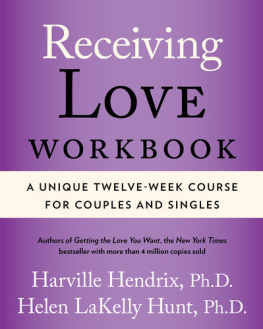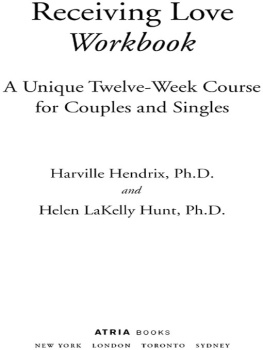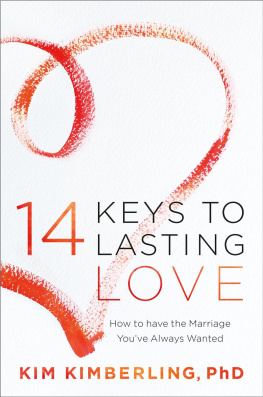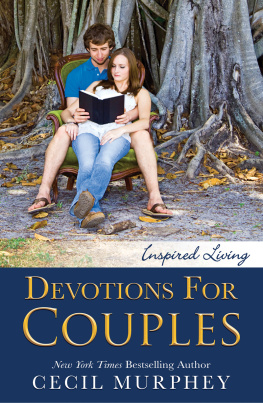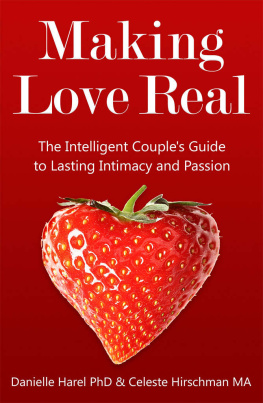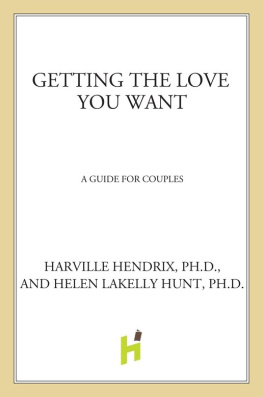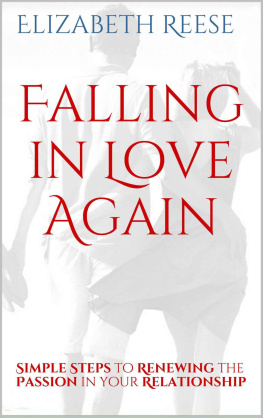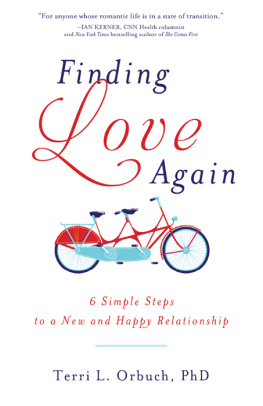Table of Contents
Copyright 2010, 2000, 1999 by Dr. Bonnie Eaker Weil
All rights reserved.
This book, or parts thereof, may not be reproduced in any
form without permission from the publisher; exceptions are
made for brief excerpts used in published reviews.
Except for the family and friends who have given permission to be mentioned in this book, names and identifying characteristics of individuals have been changed to protect their anonymity.
Bonus exclusive video content
for book readers!
Visit www.doctorbonnie.com\videoexclusive to view life-changing material for both singles and couples. With this new video, youll have access to real-life examples and techniques that can help you fall and stay in love.
View this must-watch content and learn:
When you should make the first move
When its time to take things to the next step
Fighting fair to bring on passion
Re-romanticizing the relationship
Keeping the spark alive or igniting new ones
...Even a 30-second kissing demonstration!
Courage is not the towering oak that sees storms come and go, it is the fragile blossom that opens in the snow.ALICE MACKENZIE SWAIM
I dedicate this book:
To my loving parents, Hyman and Paula Eaker , who showed me love really does conquer all . It is because of your undying love for each other and for me that I am able to share with my patients and readers all of the skills they need to Make Up, Dont Break Up .
To my patients whose courage and belief in me , Smart Heart Skills, and yourselves propelled you to transform your relationships. You are the torch carriers of Make Up, Dont Break Up . It is your personal stories and triumphs that bring this book to life! Thank you for taking the journey with me and passing the torch. It will brighten the way....
To all of you in the dark: To those who are in the dark about love and relationships, take my hand and well find the light switch together. To all those who fell in love and want to stay in love; to all those who yearn for real and lasting love; to all those who want to make up, not break up... this book is for you.
To Jeff, the most precious man in the world; a real-life prince, who encourages me to be the most I can be and supports me in reaching my highest and most inspired dreams. For this I treasure you . You have shown me:
Love feels no burden, thinks nothing of trouble, attempts what is above its strength, pleads no excuse of impossibility.... Though weary, it is not tired; though pressed, it is not straightened, though alarmed, it is not confounded; but like a lively flame and burning torch forces its way upwards and securely passes through all.
THOMAS KEMPIS
Acknowledgments
To be loved for what one is, is the greatest exception. The great majority love in another only what they lend him, their own selves, their version of him.GOETHE
To my talented wordsmith Toni Robino of With Flying Colours , without whose wisdom and dedication this book would not have been written. Your ability to understand my theories and concepts, meet pressing deadlines, and keep a level head in the midst of some very chaotic circumstances, helped me to see the light at the end of the tunnel.
To my agent, Katharine Sands of Sarah Jane Freymann Literary Agency, whose passionate commitment to this project helped bring my dream to fruition and cheered me on time and time again. Ill be forever grateful for your creative and cutting edge ideas.
To my agent, Bill Gladstone of Waterside Productions, for making this new edition possible.
To my mother-in-love, Helen Weil, whose undying dedication, belief in me, and creative ideasincluding the name for this bookliterally kept me going. You are one in a million!
To Ed Walters of Adams Media , whose patience, cooperation, and belief in me and this book made it happen. Thank you for dodging the potholes and bending over backward many times to see this book through to the end. I am truly grateful to Carrie Lewis, Nancy True, Will McNeill, and other staff who made this dream possible. To Brendan ONeill, whose patience, flexibility, openness, excitement, and willingness for innovation made this wonderful second edition possible!
To all of the incredible friends, contributors, media, and support staff who played a major role in making this book happen: There are no words to express the love and gratitude I feel for you. Thank you from the bottom of my heart!
To my wonderful husband who helped edit and read the second edition in record time, for understanding our midnight dinners due to my creativity for the new material. I could not have made the deadline without you. Because of the journey we took together, I wrote this book!
Foreword
You know quite well deep within you, that there is only a single magic, a simple power, a single salvation and that is called loving.HERMANN HESSE
That the institution of marriage is in a crisis is no longer news. For several decades the divorce rate for first marriages has fluctuated between 50 and 60 percent and the divorce rate for second marriages has been higher. The discussion about the impact of divorce on children has likewise fluctuated from benign to destructive. Given these factors, the institution of marriage itself has undergone massive changes in form from the traditional two-person heterosexual marriage to an advocacy of same-sex marriages. The discussion of the family also includes new forms that range from the two-parent family to the single-parent family, the blended family, to any persons who voluntarily live together. The ratio between these forms has changed so much that blended and single-parent families now outnumber the never-divorced families. For the first time in history, most children will grow up without constant access to their biological parents.
The date for this trend for divorce, the resulting debilitation of the traditional household, and the redefinition of the family has been associated with the end of the second World War. The disruption was triggered by divorces of marriages that were hastily formed prior to the long absences and later by the tensions created by war brides learning to speak English. While divorce has always been frowned upon in our culture, this phenomenon led to a weakening of the taboo of divorce. Many couples in unhappy marriages followed the trend of changing partners instead of changing their relationships , and this led to the situation we have today.
While marital therapy began in the nineteenth century, its status grew in response to this situation. Early forms of marital therapy were based on the model of individual psychotherapy. Generally, couples were seen separately by separate therapists with the assumption that marital conflict was solely a function of conflicts caused by intra-psychic problems. Other therapists experimented with consultations between the separate therapists. Some tried four-way therapy with both partners and both therapists in the same room. The model that finally emerged was conjoint therapy with both partners and one therapist.
However, whatever the model or method, marital therapy rated low on the effectiveness scale, with success rates reaching only about 30 percent.
Several factors contributed to this dismal figure. The major factor was the application of the model of individual psychotherapy to marital conflict. Therapists with an analytic perspective saw the conflict between partners as a recapitulation of the relationship between the child and her parents. They analyzed personal impulses and defenses and sought to evoke insight into unconscious conflict with the assumption that with the resolution of the intra-psychic struggles of each partner, their relationship would improve. Therapists from a behavioral perspective attempted to teach partners relationship skills and help them positively reinforce effective behaviors with no reference to their interior worlds. In contrast to both of these, some therapists did marriage counseling with the aim of helping the couple rationally solve their relationship problems.
Next page

